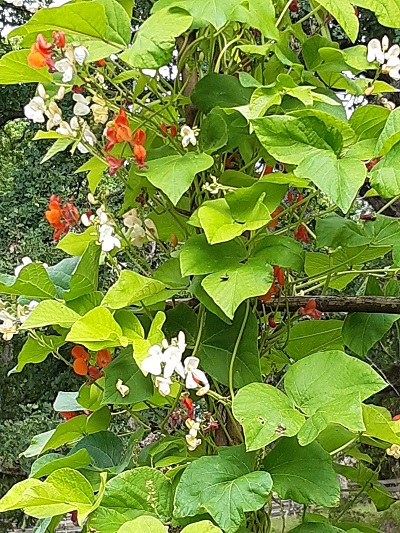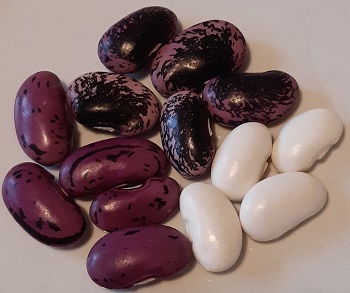Runner Bean (Phaseolus coccineus)

Also called scarlet runner bean or multiflora bean. Often grown for its decorative flowers. The flowers can be white, red, red and white or pink. The flowers open at sunrise and wilt at sunset. The flowers are highly attractive to bees and other pollinators. The pollination is impaired by hot weather.
The seeds are about 2-2.5 cm long, i.e. larger than those of the common bean Phaseolus vulgaris. The seeds of most varieties are purple with black dashes, but there are also varieties with white seeds, white seeds with brown dashes, black seeds or brown seeds. The pods contain 3-10 seeds, depending on variety.
Runner beans are often cross pollinated, so varieties need to be grown at a distance of at least 50 meters to remain true.
Most varieties of runner beans are climbing and need support from 2-3 meter long poles.
The tender green pods can be eaten boiled and cut into pieces. The mature seeds are eaten as dry beans, soaked overnight and then boiled. All runner beans, both fresh and dried, must be boiled before eating.
The plants form tubers, which can be saved in a frost free place and planted next spring.
